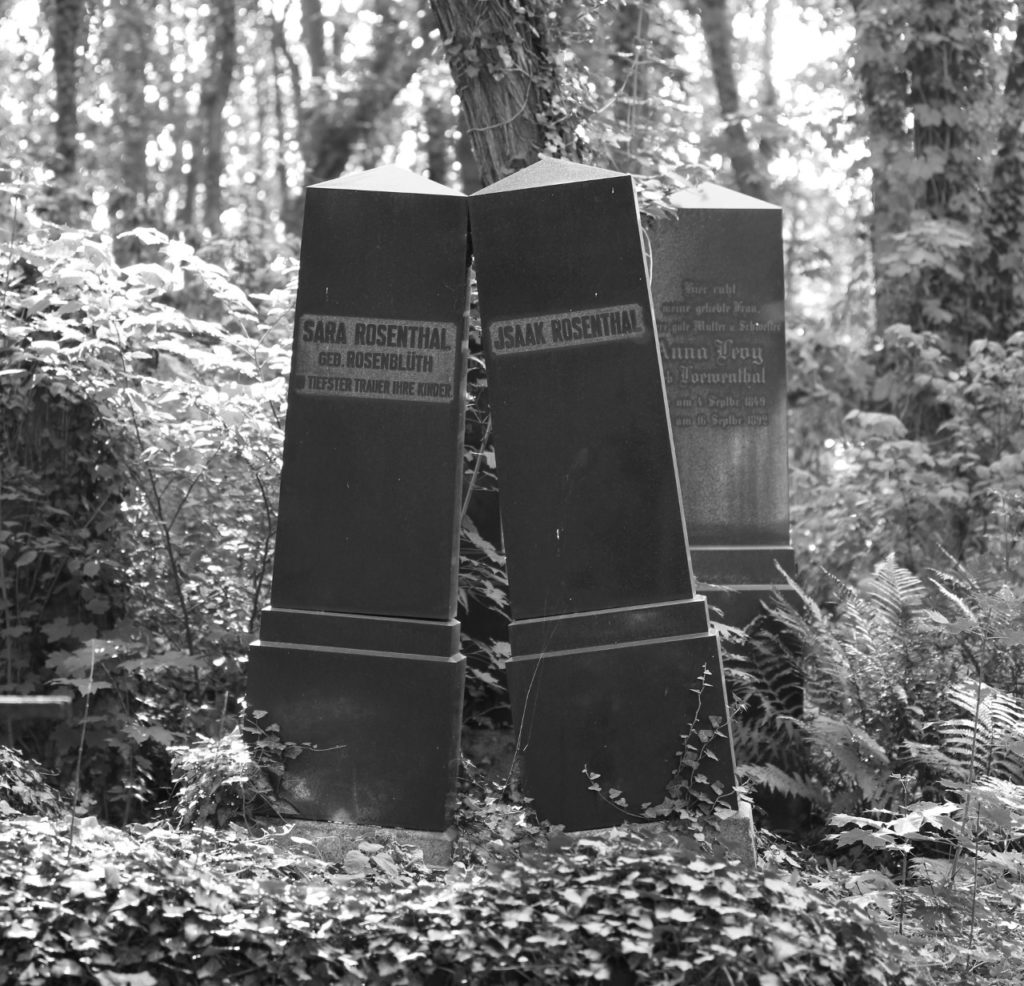
After the founding of the German Reich in 1871, the membership of the Jewish community increased to 65,000 people, and a new burial ground was needed. In Weissensee, the Jewish community acquired land of over 40 hectares, and in the spring of 1878 announced a design competition for the new cemetery. In addition to a cemetery plan, the competition called for designs for a mortuary, a hall of mourning, the residential and administrative building of the cemetery inspector, a massive enclosure with an entrance gate, and the porter’s residence. The jury was composed of four members of the community and three members of the Berlin Association of Architects. The architect Hugo Licht (1841–1923), who later became city building councillor of Leipzig, was the winner of the competition, although he exceeded the designated budget of 150,000 marks by 50,000 marks. The buildings were constructed of yellow clinker brick in Italian Early Renaissance style. The magnificent wrought iron entrance gate was made by the iron foundry of Marcus Fabian. Hugo Licht laid out the cemetery with numerous avenues and ornamental squares of different basic shapes.
The opening of the cemetery took place on September 9, 1880. In Burial Field A 1 a Row of Honour was designated and the first hereditary graves were established at the cemetery wall. From 1909, there were cemetery regulations, which among other things regulated the size of the graves, as well as rules for the design of the graves. A nursery within the cemetery grounds grew plants and provided funeral floral arrangements.
In 1910 the New Hall was built in the rear part of the cemetery. After its destruction during World War II, the ruins were demolished in 1978/80 and the mound that remained was planted with grass. Here now lie gravestones from the Jewish Cemetery in Köpenick, which was decommissioned in the 1960s. In 1914–1927, the Field of Honour designed by Alexander Beer was created for the fallen Jewish soldiers of World War I, 1914–1918.
With the increase in cremations, the cemetery provided additional urn fields near the Field of Honour in 1926. During this period, there were 200 workers involved in the administration and maintenance of the cemetery, including 67 officials who worked under the supervision of the 18 members of the Cemetery Commission. During World War II, although 4,000 graves were destroyed by air raids and many were damaged, the Weissensee Cemetery was the only Jewish institution, apart from the Jewish Hospital in Wedding, to survive until the end of the Nazi era. It was here that Jewish people experienced their liberation on April 23, 1945, and it was here that Rabbi Martin Riesenburger celebrated the first free Jewish service. Recognised as a National Cultural Monument of the German Democratic Republic at the beginning of the 1980s, intensive restoration could nevertheless only be carried out after 1990. Today, Europe’s largest active Jewish cemetery has over 116,000 gravesites and, with its 900 volumes, an interment archive that is unique in the world.
Author: Dr. Jörg Kuhn (first published in 2014 for the cemetery app wo-sie-ruhen.de)
